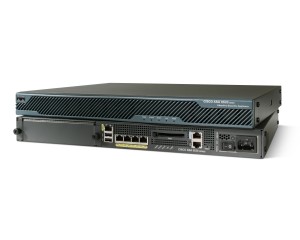My study of the ASAs is drawing to a close. My plan was to do a lot of posts regarding these studies, but as you might guess, it is too difficult to study and do a lot of blogging on the process when you are dealing with a fixed amount of time for actual study. Here is a recap of prep required on the ASAs.
The Hardware:
- Cisco ASA 5500 and 5500-X Series Adaptive Security Appliances
- Cisco ASA 5500 Series Adaptive Security Appliances OS Software Versions 8.2x, 8.4x, 8.6x
- We can expect 4 of these devices
The Study Checklist:
- Initializing the Basic Cisco ASA Firewall (IP Address, Mask, Default Route, etc.)
- Understanding Security Levels (Same Security Interface)
- Understanding Single vs. Multimode
- Understanding Firewall vs. Transparent Mode
- Understanding Multiple Security Contexts
- Understanding Shared Resources for Multiple Contexts
- Understanding Packet Classification in Multiple-Contexts Mode
- VLAN Subinterfaces Using 802.1Q Trunking
- Multiple-Mode Firewall with Outside Access
- Single-Mode Firewall Using the Same Security Level
- Multiple-Mode, Transparent Firewall
- Single-Mode, Transparent Firewall with NAT
- ACLs in Transparent Firewall (for Pass-Through Traffic)
- Understanding How Routing Behaves on the Adaptive Security Appliance (Egress and Next-Hop Selection Process)
- Understanding Static vs. Dynamic Routing
- Static Routes
- RIP with Authentication
- OSPF with Authentication
- EIGRP with Authentication
- Managing Multiple Routing Instances
- Redistribution Between Protocols
- Route Summarization
- Route Filtering
- Static Route Tracking Using an SLA
- Dual ISP Support Using Static Route Tracking
- Redundant Interface Pair
- LAN-Based Active/Standby Failover (Routed Mode)
- LAN-Based Active/Active Failover (Routed Mode)
- LAN-Based Active/Standby Failover (Transparent Mode)
- LAN-Based Active/Active Failover (Transparent Mode)
- Stateful Failover Link
- Device Access Management
- Enabling Telnet
- Enabling SSH
- The nat-control Command vs. no nat-control Command
- Enabling Address Translation (NAT, Global, and Static) Pre & Post 8.4
- NAT Objects
- Context-Aware firewall
- Identity Firewall
- Using ASDM and Cisco Prime
- Policy NAT
- Destination NAT
- Bypassing NAT When NAT Control Is Enabled Using Identity NAT
- Bypassing NAT When NAT Control Is Enabled Using NAT Exemption
- Port Redirection Using NAT
- Tuning Default Connection Limits and Timeouts
- Basic Interface Access Lists and Access Group (Inbound and Outbound)
- Time-Based Access Lists
- ICMP Commands
- Enabling Syslog and Parameters
- NTP with Authentication
- Object Groups (Network, Protocol, ICMP, and Services)
- Nested Object Groups
- URL Filtering
- Java Filtering
- ActiveX Filtering
- ARP Inspection
- Modular Policy Framework (MPF)
- Application-Aware Inspection
- Identifying Injected Errors in Troubleshooting Scenarios
- Understanding and Interpreting Adaptive Security Appliance show and debug Outputs
- Understanding and Interpreting the packet-tracer and capture Commands
- Cisco IOS Firewalls
- Zone-Based Policy Firewall Using Multiple-Zone Scenarios
- User-Based Firewall
- Secure-Group Firewall
- Transparent Cisco IOS Firewall (Layer 2)
- Context-Based Access Control (CBAC)
- Proxy Authentication (Auth Proxy)
- Port-to-Application Mapping (PAM) Usage with ACLs
- Use of PAM to Change System Default Ports
- PAM Custom Ports for Specific Applications
- Mapping Nonstandard Ports to Standard Applications
- Performance Tuning
- Tuning Half-Open Connections
- Understanding and Interpreting the show ip port-map Commands
- Understanding and Interpreting the show ip inspect Commands
- Understanding and Interpreting the debug ip inspect Commands
- Understanding and Interpreting the show zone|zone-pair Commands
- Understanding and Interpreting the debug zone Commands
- Cisco IOS Services
- Marking Packets Using DSCP and IP Precedence and Other Values
- Unicast RPF (uRPF) With or Without an ACL (Strict and Loose Mode)
- RTBH Filtering (Remote Triggered Black Hole)
- Basic Traffic Filtering Using Access Lists: SYN Flags, Established, etc. (Named vs. Numbered ACLs)
- Managing Time-Based Access Lists
- Enabling NAT and PAT on a Router
- Conditional NAT on a Router
- Multihome NAT on a Router
- CAR Rate Limiting with Traffic Classification Using ACLs
- PBR (Policy-Based Routing) and Use of Route Maps
- Traffic Policing on a Router
- Traffic Characterization
- Packet Classification
- Packet-Marking Techniques
This list might seem overwhelming, but just remember to track your skills on each topic with a rating system. I had studied so much of this gearing up for my previous attempt that I noticed I did not have to restudy much of it at all!

Nice list Anthony.
Thank you so much – yes – lots of fun things to practice in this section.
Thank you for sharing technology. I need to hardware security.
It is my pleasure – thank you for visiting and posting!
I am a great fan !!!!
CCIE – Security tutorials … Pleasseee !!!
🙂
Thank you so much – yes – they are coming!
These videos are the newest right ? (350-018) CCIE Security(Wirtten)
Wait soon reply from you 😉
Best Regards,
Alia